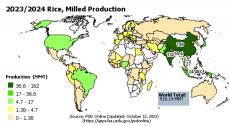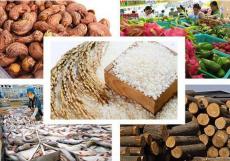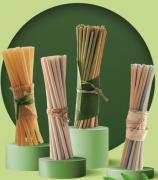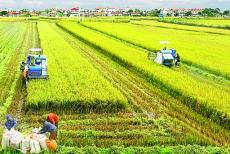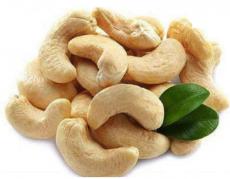Vietnam Cashew Nuts: How is its quality? Why should you buy it?
With the characteristics of shape, smell, and taste, cashew nuts in Vietnam are recognized as one of the best quality cashew nuts in the world. In particular, in 2020, Vietnam ranked No. 1 in the world in terms of export cashew output.
From the cashew nuts market in the world to Vietnam cashew
Cashew trees originate from Brazil in the tropics of South America and are gradually distributed to Africa, Asia, and Australia. Today, cashew trees are widely grown all over the world. Cashew trees can withstand places with diverse and harsh climatic conditions. As a high-temperature plant that is very sensitive to cold, the tropical climate with a distinct dry season is the right condition for the cashew tree to grow best.
Vietnam-export-cashew-nuts
In 2020, Vietnam is no.1 in exporting Cashew nuts
According to the FAO in the world, there are currently over 32 commercial cashew-producing countries. Here are the top 10 cashew-growing countries in the world today: India, Vietnam, Brazil, Nigeria, Tanzania, Indonesia, Guinea, Bissau, Cotolvore, Mozambique, and Benin. Cashew has gradually become an official crop of special interest to develop. It holds an important position in the agricultural market of a number of tropical and subtropical countries.
From a small country exporting raw cashew nuts to the world’s biggest exporter of cashew kernels in the last 30 years. Vietnam has exported cashew kernels to over 90 countries and territories, accounting for over 80% of global cashew exports.
Vietnam is fortunate to possess the advantages of a tropical climate and fertile soil. In addition, Vietnam is a country with development in agriculture, has the experience and good conditions for growing, and the people’s skills are high. Therefore it is possible to produce high-quality cashews, giving consumers quality cashews that are delicious and best for health.
Taste of cashew nuts
Vietnamese cashew nuts have a very characteristic greasy, fleshy taste. Each seed will bring the full flavor of lightly salty, fatty, fragrant, and sweet aftertaste. Roasted Vietnamese cashews will be very crispy, full of flavor in the mouth because of their specific taste. When you eat, you will remember it.
Appearance of cashew nuts
Appearance-of-cashew-nuts-in-Vietnam
Appearance of cashew nuts in Vietnam
About the form, Vietnamese cashew kernels (especially Binh Phuoc cashew nuts) are mostly dense, like thick bread. Although not as big as foreign cashew products, Vietnamese cashews are very sturdy, evenly large, with a full belly, not flat, wings of Vietnamese cashews are also stronger to protect the seeds inside.
About the color, Vietnamese cashews have a milky white color (some places are slightly ivory) uniform throughout from all positions of the kernel, not that the outside is different from the inside.
Smell
The smell of Vietnamese cashews, whether it’s raw nuts to processed nuts, has a delicious smell, without loss of smell.
Cashew nuts in Vietnam are always strictly processed and preserved so that the quality can be kept intact for 6 months, and can be used up to 1 year from the date of manufacture. In particular, cashews exported from Vietnam do not have the smell of oil – a special point. That makes Vietnamese cashews the best choice for you, making your dishes and products made from cashews more delicious and fragrant than ever.
Vietnam cashew nut export situation in 2021
According from the General Department of Customs, the average export price of cashew nuts in Vietnam in November 2021 reached 6,505 USD/ton. Price of cashew nuts down 1.6% compared to October 2021, but up 6.0% compared to November 2021. In the first 11 months of 2021, Vietnam’s average export price of cashew nuts reached $6,288/ton, up 0.2% over the same period in 2020.
Compared to November 2020, Vietnam’s cashew nut exports increased sharply, except for China, the UK, and Russia. In the first 11 months of 2021, cashew nut exports to the US, China, Netherlands, Germany, and Canada increased.
To achieve the above positive results thanks to the efforts of cashew nut processing and exporting enterprises, they still maintain production and ensure supply, despite the complicated developments of the 4th Covid-19 wave.
In addition, new generation FTAs help Vietnam’s cashew industry to boost exports to key and potential markets such as EU member markets, Russia, Canada, the UK, and Japan. Notably, Vietnam’s cashew industry maintains export growth to the US market, the largest and most important export market.
